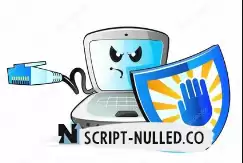How to protect a website from hacking and viruses
Any website is vulnerable to intruders and is not immune from hacking. It is not necessary that the purpose of virtual criminals is to steal data or access user accounts. The site can be used as a repository of their information, usually illegal. With the help of a stolen resource, they can spread spam, engage in mining, and extortion.
An alien program parasitizes a hacked resource, using it to cheat attendance. If the protection of the site from unauthorized access is not active, the owner does not deal with this issue, then hacking will happen sooner or later.
Malicious viruses enter the site in the following ways:
The administrator downloads and installs infected programs that intercept access to CMS/FTP protocols.
The administrator visits suspicious portals.
Click on unverified links.
Vulnerability of plugins, templates and other components.
Advertising from unscrupulous partners.
Malicious user actions. For example, the placement of infected links.
Attackers can choose a username and password manually, or use a utility to connect to the admin panel.
Types of hacking
Criminals are perfecting their illegal craft. In order to protect against hackers more effectively, it is worth studying their basic methods:
SQL injection. Embedding SQL code into Cookie data or GET/POST requests. In this way, you can steal the database or completely destroy it.
Web Shell. Allows hackers to completely hijack access. The script is implemented through vulnerabilities, for example, a file manager. Logging in through an insecure connection and passwords that are too simple also increase vulnerability.
XSS attack. The malware is controlled from a remote server. It is launched by visitors through the login form, feedback, registration, comments. The seizure of access to cookies threatens to lose the functionality of the site.
CMS vulnerability. Criminals find a weak point in protection and introduce Shell and other viruses. Weak points can be forms of authorization, connections, and unsecured access to hosting.
Brute force attacks. Even with the high reliability of the CMS, hackers do not give up hacking attempts. Bruteforce is a program that deals with automatic password selection.
Phishing. It is used by fraudsters to steal payment data and access the admin panel.
Shared hosting. In order to save money, the provider hosts several sites on the same server. If a hacker resource turns out to be among them, its owner will have the opportunity to hack into neighbors.
A false interface. The malware copies the browser's appearance. If the admin enters the data without checking the address, the site will be hijacked.
Ddos attack. The invasion of bots simulates congestion and leads to a temporary loss of performance.
User sabotage. A hacker can register on the forum and leave an infected link.
What information can a site hacker get?
The criminal gets access to important data that he will use for his own purposes. Even if the site remains operational, the trust of customers may be irretrievably lost.
If you ignore the ways to protect sites, you can get into serious trouble:
By selecting passwords, the fraudster will be able to fully manage the resource;
Access to the client database is fraught with mailings and spam to the addresses of registered users;
Using the payment data of visitors, the fraudster will try to steal their funds;
Filling the site with ads will lead to the loss of customers and enrich hackers;
The captured resource can be used as a proxy server for attacks on other sites;
Visitors may be redirected to paid subscription programs or infected pages.;
Stolen sites are often used for mining and storing illegal data;
If the hacking was ordered by competitors, the site may contain information that undermines the reputation of the company.
All this leads to a drop in traffic and sanctions from search engines. In some cases, there are problems with law enforcement agencies.
How to ensure the security of the site
You have to protect your resource continuously in all possible ways. No one will warn about the upcoming attack, besides, the arsenal of cyber scammers continues to grow.
Protecting the site from brute force attacks is required on an ongoing basis, since the malware goes through a huge number of combinations. The login and password must be long and complex so as not to make the task easier for criminals. The administrator should generate a complex access code for himself, and encourage visitors to do the same. It is advisable to limit the number of password attempts.
To protect the site from DDoS attacks effectively, you need to configure the rights in the control panel, restricting access to everyone except the owner or admin. As an additional tool, a plugin or extension that monitors user actions is suitable.
Regular updating of the CMS system and its components reduces vulnerability. Each new version takes into account errors and enhances security, which increases resistance to shells and SQL. It is advisable to have a firewall for additional protection.
It is necessary to create backups of the site in order to restore it from backup in case of capture. Carefully check all sources of information, download licensed programs, and do not leave data on suspicious resources.
It is also worth installing an SSL certificate and using the secure HTTPS protocol. Check the site with an antivirus, remove malware in time.
It is worth taking care of how to protect the site from bots from the day the resource was created. Parsing is very common and difficult to deal with. There are programs that recognize and block bots.
How to find out if a website has been hacked
It is almost impossible to recognize a break-in with the naked eye. The first symptoms do not always occur immediately, sometimes the consequences manifest themselves within a few months. The following changes should be alerted:
The site loses its position, falls in the search results;
The download is too long;
User complaints about spam;
Detection of suspicious content that was not added by the administrator;
An unknown admin with access rights has been added;
Forced redirection of visitors to third-party resources.
Instructions (what to do if the site is hacked)
If there is at least one symptom, you need to take immediate action. Urgent actions when signs of hacking are detected:
Change passwords;
Close access to suspicious persons;
Perform diagnostics using an antivirus or an online service;
Find malware yourself or contact the hosting technical support.
Perhaps these actions will help save the site, but you will have to spend a lot of time, there is a risk of losing customers and reputation.
Webmasters from the BrainCloud team face similar tasks on a daily basis and are familiar with all diagnostic methods. We will conduct a comprehensive analysis and decide how to install protection on the site, which additional tools to choose. Ensuring security is a serious job that requires experience. Let this become the concern of a specialist so that you can safely conduct business.


 Spain
Spain
 Portugal
Portugal




